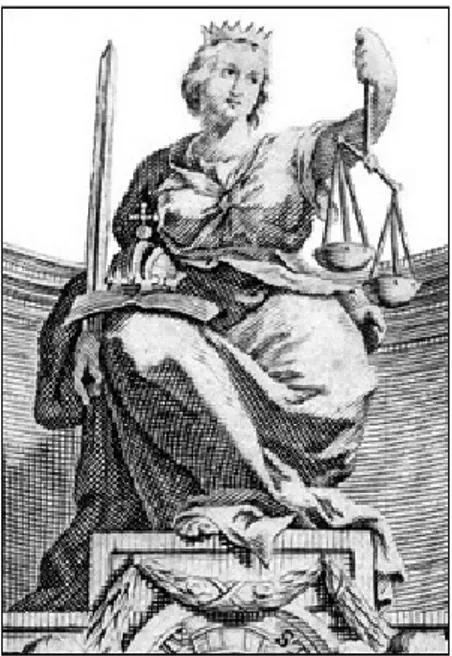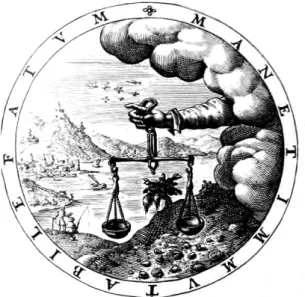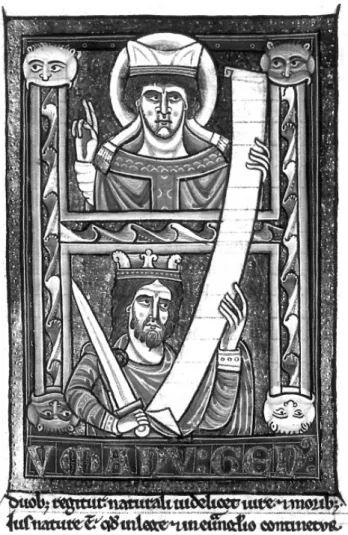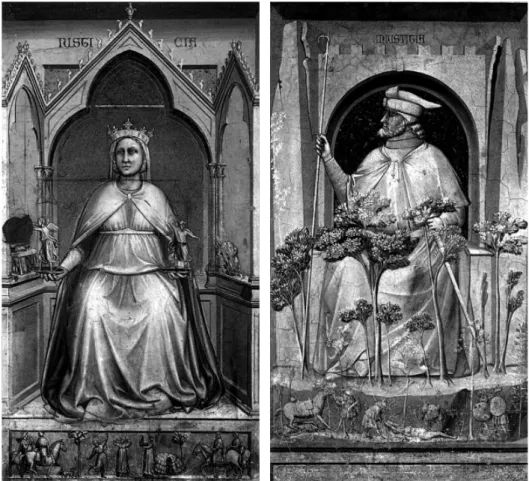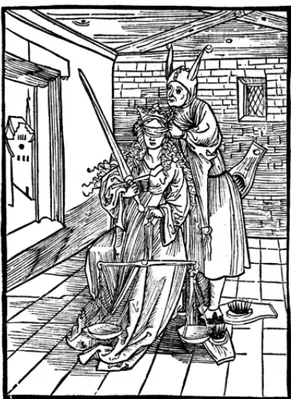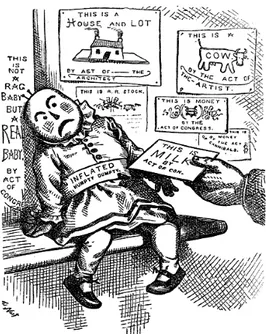MIMESIS
TCRS
2/2014
Teoria e Critica
Visiocrazia.
Immagine e forma della legge
Visiocracy.
Image and Form of Law
A cura di
Paolo Heritier
Con il sostegno dell’Istituto “Campus Don Bosco” all’attività del Centro Studi di Teoria e Critica della Regolazione Sociale
Direttore scientifi co: Bruno Montanari Direttori editoriali:
Alberto Andronico, Paolo Heritier Comitato editoriale:
Giovanni Bombelli, Alessio Lo Giudice, Giovanni Magrì, Paolo Silvestri, Guglielmo Siniscalchi
Comitato scientifi co:
Salvatore Amato (Università di Catania), Francesco Cavalla (Università di Padova), Fabio Ciaramelli (Università di Catania), Vincenzo Ferrari (Università di Milano), Peter Goodrich (Cardozo School of Law), Antonio Incampo (Università di Bari), Jacques Lenoble (Université Catholique de Louvain), Hans Lindahl (Universiteit van Tilburg), Sebastiano Maffettone (LUISS “Guido Carli” – Roma), Eligio Resta (Università di Roma Tre), Eugenio Ripepe (Università di Pisa), Herbert Schambeck (Universität Linz), Gunther Teubner (Goethe-Universität Frankfurt a. M.), Bert van Roermund (Universiteit van Tilburg)
MIMESIS EDIZIONI (Milano – Udine) www.mimesisedizioni.it [email protected] Issn: 19705476 Isbn: 9788857530758 © 2015 – MIM EDIZIONI SRL Via Monfalcone, 17/19 – 20099 Sesto San Giovanni (MI)
Phone: +39 02 24861657 / 24416383 Fax: +39 02 89403935
Indice
Nota introduttiva
p. 7
Quaderno “Visiocrazia”
Peter Goodrich, Visiocracy. On the Futures of the Fingerpost
p. 11
Daniele Cananzi, Iconomy: Law and its Representation
p. 39
Guglielmo Siniscalchi, Visual Legal Signs
p. 51
Flora Di Donato, Making in-Justices Visible. The Blindness of Bureaucracy
p. 57
Enrico Cassini, From the Underworld: on the Origin of Images between
the Emblemata Iuris and Film Theory
p. 79
Paolo Heritier, Forms of Legal Aesthetics of the Body and Sources of Law:
the Hand, the Foot, the Eye. Plural Natural Paths in Law
p. 87
Forum “Emotional Force and Form in Legal Education”
Carlo Ossola, La legge e la leggenda
Pierangelo Sequeri, Estetica del comandamento. Fenomenologia ed ermeneutica dell’ingiunzione
p. 119
Federico Vercellone, Chaos and Morphogenesis in German Romanticism
p. 129
Le recensioni
C. Bottici,
Imaginal Politics. Images beyond Imagination and the Imaginary,
Columbia University Press, New York 2014,
di Paolo Heritier
p. 137
G. Deleuze,
Istinti e istituzioni, Mimesis, Milano-Udine 2014, di Alessandro Campo
p. 139
G. C. Pagazzi,
Fatte a mano. L’affetto di Cristo per le cose, EDB, Bologna 2014 di Luigi Pirri
p. 142
H. Miyazaki,
Arbitraging Japan. Dreams of Capitalism at the End of Finance,
University of California Press, Berkeley 2013
di Paolo Silvestri
p. 145
L. de Sutter,
Métaphysique de la putain, Léo Scheer, Paris 2014 di Paolo Heritier
Daniele M. Cananzi
1Iconomy: Law and its Representation
1. Iconomy: representation and thought
Aesthetic of law is a subject that can be investigated from several points of view; it is a way of approaching law, which is not easily drained, nor limited to a unitary defi nition.
As far as I am concerned, I intensely pursued aesthetic of law with reference to the form in and of law: such formativity that Luigi Pareyson’s aesthetic allowed me to fi nd, both in law and in his life.
However, in this occasion, I would like to evoke that kind of itinerary2 and in
doing so, I prefer to choose another perspective: by using the adjacent and paral-lel road of representation that brings to the thought, to the idea that lays behind. Albeit immediately warning that I will just limit myself to point out suggestions, more than anything else, by summarizing this with iconomy: nomos through rep-resentation, immago.
An etymological observation, to me, appears to be immediately suggestive: the word icon, which is the root for the word iconomy, derives from Greek eỉkώn-óvoς and its perfect infi nitive eỉkénai means to be similar – so that by thinking about the
manhood as made in the image of God (immago Dei), i.e. being similar to God – but it also means to appear. And eỉkóna means, therefore, image.
Iconomy is, then, a neologism that I propose in the meaning of a refl ection on
the perception of image, on the representation of law3.
But why this choice? For sure, I acknowledge the structural formativity and aes-thetic of law traced by Pareyson, but I also refer to my old love for icons, and to my old passion for images and works of art on law. Interests, those ones, that are even reinforced and, in a certain way, also rediscovered, thanks to a recent contribution by Peter Goodrich, Visiocracy. On the future of legal emblems4.
In his study, Goodrich begins with an experiment, which took place at New York University, aiming at analyzing the infl uence of the situation, intended as the
1 Professor of Philosophy of Law and Theory of Interpretation, Sapienza University of Rome, Director of CRED
2 I briefl y recapped the itinerary in the recent paper Estetica del diritto. Formatività,
morfologia ed ermeneutica della giuridicità i.e. “Aesthetic of law. Formativity, morphology and
hermeneutics of lawfulness” presented at the ISLL Congress La vita nelle forme. Il diritto e le
altre arti (Life in forms. Law and the other arts). Urbino, July 3-4, 2014.
3 P. Heritier has been writing on this issue in the process of elaborating a sort of aesthetic of law inspired by Legendre and Di Robilant, Estetica giuridica, 2 vols. Giappichelli, Torino 2012.
4 The Italian translation, carried out by P. Heritier appeared in Il diritto tra testo e
40
40 Daniele M. Cananzi TCRS TCRS
physical scene, the location where actions take place, on the way of acting, and in particular by investigating it within the legal domain5.
The outcome of this experiment was to fi nd out that “in the theatre of justice and truth, something can be glimpsed by reason and taken to the written page”. The result is not to be taken superfi cially, Goodrich himself has pointed out the essential questions: “What did the students see in the use of robes and offi cial suites, or in the use of Latin, in elevations, in rites and emblems? Why did the noticeable ornaments and accidental elements of the judiciary presence did have an effect on their percep-tion of the legal authority and on their comprehension of justice and trial?”6.
It would seem that through those images, those symbolizations, the sense of law (meant as the weight of law) would be more present and pressing, and it would result more visible, and I could shorten it up by saying: nomos would be more present. Present through image.
Because, in the end, those symbolizations are external and formal elements: icons, images, representations; but what do they represent? Law, justice, nomos.
The theme for an iconomy is then caught. A sort of return of form in law, against the trivial synonymic reduction to formalism.
We are therefore moving towards a counter-modern direction, if I can say so7.
In modernity we see the word/image separation taking place and becoming promi-nent (in law, but not only in law); the rational/perceptive separation (in law, but not only in law). And those two dichotomies that are brought about, are them-selves generating and giving qualifi cation both to law and aesthetic.
From one point of view, we can think to the idea of law, fomented by codifi ca-tion: “Law is everything: statute is the whole law”, the legalism motto, the formal-ism8; auctoritas non veritas facit legem, so to speak with the words of Hobbes.
From the other, this brings to our minds the re-thinking of aesthetics that took place through recovering aisthesis9, recovering sensibleness and location,
atmos-pherology10, just to quote Tonino Griffero.
Iconomy fi nds in those tracts its own premises. From thinking by defi nitions, according to the model of clear and distinct ideas, to “thinking by images”, as I say to recall Vercellone and Breidbach11.
5 In particular, some Law students, divided in two groups, were given a case to discuss: the fi rst group was hosted in a courtroom and asked to follow procedural/ritual rules, the sec-ond one was invited to present the case in an informal setting and in a makeshift auditorium. The registered outcome was that the fi rst group revealed itself more incline to respect authority, legitimacy and justice than the second one.
6 Ibidem, p. 17.
7 And with all the specifi cations and details that should be taken into account when con-sidering the theme of modernity. See B.Romano, Relazione e diritto tra moderno e postmonderno, Giappichelli, Torino 2013. See also the proceedings of the Conference on Mito moderno e
moder-nità senza assoluto. I. L’altra fi losofi a, cured by D. Cananzi, E. Rocca, Giappichelli, Torino 2014.
8 On the point it is still thoughtful and contemporary L. Lombardi Vallauri analysis in
Corso di fi losofi a del diritto, Giuffrè, Milano 2007, p. 29 ff.
9 See the important contribution by M. Ferraris, Estetica razionale, Cortina, Milano 2011. 10 T. Grifffero, Atmosferologia. Estetica degli spazi emozionali, Laterza, Roma-Bari 2010.
TCRS
TCRS Iconomy: Law and its Representation 4141
Because image is structurally defi ned, but it is not in itself a defi nition; it is fi xed, but it cannot be fi xed in one unique meaning.
Thinking by images, through iconomy, becomes a thinking not by defi nitions: and therefore, instead of the neverending (but in the end maybe also useless) pro-gression of the several “what is it?”, there is a different thinking, according to symbolization parameters.
I am deeply persuaded that Robert Jacob is right in observing that “il ne suffi t pas
que justice soit rendue, il faut encore qu’elle donne à partager la convention qu’elle l’est. L’être et le pareître lui sont également indispensables” (Engl. “it is not enough that justice is made, it is also necessary that it is made to share the agreement that constitutes it. Being and appearing are equally and reciprocally required”). And such operation iconomically
not only restores the centrality of form and forms in law, but also it also makes it clear that a content, when deprived of a formal manifestation, is lacking one substancial meaningful aspect of law. Thus, Jacobs continues: “l’institution qui n’aurait de la justice
que les forms serait parodie, sans doute. Mais inversement, celle qui ne serait qu’effective, qui, tout en observant une éthique rigoreuse et sachant se faire obéir, négligerait les appa-rences, celle-là affaibilirait dangereusement la confi ance qui fait venir à elle la demande et accepter ses decisions. Une justice qui ne réussit pas à passer pour telle manqué en quelque façon à sa mission de régulation sociale”12 (En. the institution taking just the formalities
of justice will undoubtedly be defi ned as parody. However, on the contrary, the effective one, which by rigorously observing ethics is just
arrogantly asking for obedience, will disguise appearance and dangerously will abuse the confi dence behind the act of recurring to justice and accepting its decisions. A justice that does not succeed in doing this would be somehow failing its mission of social regulation).
Again, our iconomic question is back: on the representation of law and justice.
The perception of the one, the law, is a direct consequence of the perception of the other, justice. As it is generally known, there was a shift in the perception of justice – and thus of law – from divine to human. Justice as the goddess of traditional iconology, with her symbols: the sword and the scale is only one (but not the only one) image.
One crucial element is power. A sort of power coming from above, from supernatu-ral: and therefore something which is received and not created, or, nevertheless, something that is not discretional and requires certain conditions.
12 R. Jacob, Immages de la justice, Le Léopard d’Or, Paris 1994, p. 9.
Fig. 1 Detail of the frontispiece calcography signed “G. van der Gouwen sculpsit”, from Vol. I of Corpus juris civilis, Editio nova, Amsterdam: sumptibus Societatis, 1681.
42
42 Daniele M. Cananzi TCRS TCRS
Fig. 2 G. Rollenhagen, Nucleus emblematum selectissimorum (Cologne: Jasonium, 1611) emblem 83. Image taken from P. Goodrich,
Legal Emblems and the Art of Law, Cambridge, Cambridge Press, 2014, p. 18.
And this makes it clear that justice has always been represented as a goddess, as somehow supernatural in any case. Why, then, does someone have the power to act on others? By divine command, or, even better, by delegation, by designation.
Fig. 3 Christ delegates spiritual and secular powers to the pope and to the emperor. Decree of Gratianus with glossa by Barthélémy de Brescia. Image taken
TCRS
TCRS Iconomy: Law and its Representation 4343
As this wonderful image shows, God delegates, exactly by giving the two swords, representing the two powers, both to the pope and to the emperor, which are therefore commonly bound by the same decree, the same very text. Another image taken from the Decree of Gratianus.
Fig. 4 Spiritual and secular powers invested by statute. Decree of Gratianus with glossa by Barthélémy de Brescia. Image taken from R. Jacob, Immages de la justice, plate I.
44
44 Daniele M. Cananzi TCRS TCRS
Justice then is secularized, highlighting the sings of its power, not related any more to divinity, but belonging to humanity, as a human business. That is how Giotto represents it in the Cappella degli Scrovegni: so much human to justify a specular representation of injustice.
Fig. 5 Giotto, Justice, 1306, Cappella degli Scrovegni, Padua. Fig. 6 Giotto, Injustice, 1306, Cappella degli Scrovegni, Padua.
Human, overly human, so much human that it can be characterized by trans-forming its symbols in parody: as in the renown drawing by Brant.
TCRS
TCRS Iconomy: Law and its Representation 4545
Fig: 7 S. Brant, Xylography taken from The ship of fools, Basel, 1497.
Here, the veiled Justice appears to be actually blind and uselessly formal, made sightless to the real needs by a clown-demon.
The idea – even though mentioned by several authors13 – of re-building the
en-tire story of law through its representing images14 would be very evocative; but it
is not the journey I would like to take, at least, not in this time and place. It would certainly require to go way back in the past and to dig out in such direction.
I prefer, instead, to turn my eye to the future and offer some iconomic sugges-tions; to see what comes out for today’s and tomorrow’s law15. To do this means to
work on the idea of Jacob: justice must also be perceived as such, and on the idea of Goodrich: on the infrastructure that con-fi gures justice.
Representation, form and formalization, in law act to let the foundations be perceivable, the foundations represented by the delegating authority in Fig. no.
13 Neither fi rst, nor last, also F. Galgano Le insidie del linguaggio giuridico. Saggio sulle
metafore nel diritto, Il Mulino, Bologna 2010.
14 On the issue, cf. P. Goodrich, Legal Emblems and the Art of Law, Cambridge, Cambridge Press 2014, forthcoming Italian translation by P. Heritier, Milano 2015.
15 Of particular interest, classical works, such as the studies by Cesare Ripa, on which recently see A. G. Conte, Cesare Ripa. Icone della giustizia, in “Rivista internazionale di fi losofi a del diritto”, 2012, n. 1, p. 109 ff.
46
46 Daniele M. Cananzi TCRS TCRS
3. And the foundation lays in the light and it entails the light of equality, that light showing under the same law, the one detected in Fig. no. 4. And equality is exem-plifi ed by impartiality of justice, not arbitrary, nor contingent, which connects the non-disposability of Fig. no. 2 with the structure of Fig. no. 1.
And all these considerations compel us to meditate.
It has to make us ponder why the students of the fi rst group at New York Uni-versity felt more granted, more protected; they felt the weight of law more than the students of the other group.
However this poses again the issue of positive and natural law in aesthetic terms16, i.e. if law and justice exist by nature or by haphazard.
2. Aesthetics (of representation) of law
Here we are, again, but under different terms. Not those naïve deriving from positivism, nor those from natural law.
In the end, the parody of justice by Brant, a natural law all consisting of form, with sword and scale, but unable to see, and, instead, fouled by reality and by the perception of reality, is easily associated to another parody, by Nast, which repro-duces the ability of inventing reality, beyond the connection to facts, with what simply (and I do not say naturally) is. In a post-modern fashion and following the thesis “there are no facts, only interpretations”17.
Fig. 8 T. Nast, Stamps for milk to children, instead of milk 1876.
16 In the same direction, see also P. Heritier, Estetica giudirica, vol. II, cit., p. 142 ff. 17 F. Nietzsche, Frammenti postumi, 1885-1897, fr. 7.
TCRS
TCRS Iconomy: Law and its Representation 4747
The creative and constitutive capacity, here becomes, paradoxically, totally arbi-trary. In the parody there is a piece of paper saying “this is a cow, by the act of the congress”, and another “this is a lot, by the act of the architect”, and yet another “this is a cow, by the act of the artist”, and so on. It is not surprising, then, that someone hands a paper saying “this is milk” to a puppet, that some other paper defi nes “a true baby by decision of Congress”.
Thus “there are no facts, only interpretations” assumes a normative twist: every-thing can be constituted, according to the principle that establishes the most naïve positivistic relativism.
However, mind that foundation, equality and impartiality, the qualifying ele-ments of law, are completely excluded in this case.
And it is not a coincidence that precisely Nash is mentioned in Paolo Di Lucia preface to Searle’s book Making the Social World18. Therefore, constitutive
state-ments receive a strong caveat and, by looking for a proper meaning, an important step in their defi nition was set19.
Very shortly – perhaps too shortly, I am aware – I can conclude these iconomic divagations.
The terms of the issue are on the table.
Image is representation. Of what? It brings together what is similar between… being similar to…, and therefore in analogy; but so what?
Does the great question appears to be not in the defi nitional terms of quid? Or per-haps it lays in those investigative ones sounding like: is there truth in law and in justice? Foundation, equality and impartiality, in reality, show the space for truth in law and justice.
Nowadays there is an increasing attitude to think that the moment of law without truth has come, because – it is observed – the whole possible power is in the hand of the human being and in his will20. Everything can be justifi ed and normalized.
However, in this sense, is Nash caveat ignored or not? Is it the striking foolish-ness that Brand perpetuated or not?
A justice that measures with the scale and enforces itself with the sword, but taking out the truth, what does have it to say about law? What do we grasp of law and of justice if everything can be constituted?
Blind justice is an unfair justice, blind is a law that proceeds by thinking of val-ues just because they are shared and not by considering that they are shared just because they are values. A merely constitutive statement appears to be pointless when it ignores any qualifying and specifying facts, as correctly pointed out by Filippo Vassalli: the law, he says, “ends up necessarily in stating itself by reasoning, rather than by commands”21.
In the journey that here and now I’m trying to follow, rather briefl y, I leave be-hind the great question about truth, and I limit myself to close my discourse on the
18 P. Di Lucia, “Le due costitutività in John Searle”, in J. Searle, Creare il mondo sociale.
La struttura della civiltà umana, Cortina, Milano 2010, p. XIII.
19 G. Carcaterra, Le norme costitutive, Giappichelli, Torino 2014.
20 Recently, on the issue, N. Irti, Diritto senza verità, Laterza, Roma-Bari 2011. 21 F. Vassalli, Della tutela dei diritti, Roma 2014, p. 3.
48
48 Daniele M. Cananzi TCRS TCRS
elements that have been forming it, which are also able to open up a way towards the truthful reading of lawfulness.
Law does not exist if it is not qualifi ed by a specifying structure, therefore it also
differentiates from what is not law (e.g. the arbitrary exercise of reason) and it justifi es the quarrelling over unfair content (e.g. unconstitutionality, unlawfulness, illegality of a disposition).
What iconomy claims to argue are the characters of impartiality, equality and foundation, i.e. the characters of the fundamental legal structure, of the aesthetic structure of law.
In law, constitutive statement is in itself instituting.
The act of institution is always “in the name of…” – also according to the con-siderations by Pierre Legendre22 – thus highlighting equality for all, grounded on
impartiality and required by the foundation of law itself. Hence, on the basis of such “order” representing the idea of a third place, the place of a constant turning back to foundations: a problematic and inexhaustible issue.
Legal endeavor is so much structurally and substantially represented by this constant coming back to its foundation, by actualizing, realizing it and interpret-ing it. It is, creatively, as a “creatinterpret-ing conformativity”23, as the act of constituting
into morphological.
Constitutive statement, in that iconomic sense, is representing the capacity of law to make justice.
However, such a standpoint does not mean that law constitutes justice, but rath-er that it constantly constitutes a solid refrath-erence back to foundations, as a sort of beginning that continuously gathers (also hermeneutically) sense.
And in doing so, it has its own procedures, which grant equality and third-point perspective, by taking out the foundation and giving it each time a new and differ-ent sense. According to a beginning that, thus, has no end, but rather a beginning that is never ex nihilo.
In such terms, it looks interesting to go back – just to conclusively operate a recall – that morphology drawn by Frosini and profi ciently put under discussion both by Cotta and Carcaterra.
Not starting ex nihilo is, in fact, connected to coming back to foundations, that is what happens when it comes to constituting in law. But so what? The Norm of action is the answer that Frosini gives, recalling Capograssi.
“Law is not practicity – he writes – it is, of course, action, but an action that is given by a structure: it has, therefore, received a practical expression or defi nition;
such behavior is lawful (due or permitted), as far as it is conformed to an original
form (in an ideal sense, not chronological), to a structure; i.e., an action is lawful because it refl ects a forma agendi, because it is modeled, confi gured, profi led ab
22 P. Legendre, Leçons I, Fayard, Paris1998; and also Della società come Testo,
Giappi-chelli Torino 2005.
TCRS
TCRS Iconomy: Law and its Representation 4949
intra by this exemplar action, paradigm, prototype, which is defi ned, regulated
and stated by law”24.
Form, intended just like Frosini meant, as structure, is what gives the essence of legality to experience.
This is a particularly relevant point, because it is through this action of in-form-ing, i.e. putting in a form, that law shapes itself. As Cotta observes, ‘the law consti-tutively states the legal form of mankind and his/her actions’ “Forma dat esse rei” in the words of St. Thomas, based on Aristotle: form is what makes a being what it actually is. That is to say, in our case – Cotta concludes –that form qualifi es action, and this is what makes it legal”25.
Such an aspect, always according to Cotta, is the distinctive and specifying char-acter of law, the socionomic trait (as he calls it) of being-in-society26.
Exactly in those terms – and Carcaterra was one of the fi rst authors to use the expression “formativity” for law – the “idea of a ‘formative’ capacity (not merely ‘formal’) of law with relations to its contents” starts taking place; an idea that al-ways includes the formal, intended as the act of constituting: “forming is not just to adequate [the law] to the object, nor simply to ask and wait for the object to modify accordingly; it is the act itself of modifying it, of giving it a new character, of creating for it a new dimension of existence. Precisely this aspect does make the law as a form of empowering human action”27.
To constitute: but how so? Without limits? Or in absolute terms?
What is demonstrated in law is that for human beings the act of forming and of constituting is certainly free, but freedom – for humanity – is not unlimited: it fi nds the non-contradiction principle, for instance; it fi nds the structure of law itself, which is qualifi ed on what is non-disposable.
In such terms, formativity, i.e. the structure of law, bears already some implicit contents.
In such terms, an iconomy appears to be an interesting point of view on legal reality.
In the end, I could conclude that what is not convincing in Brandt and Nast hypotheses is to put the structure into brackets (foundation, equality, impartiality).
Legality fi nds in structures its own fundamental structure, which allows to con-stantly bring the question back to foundations, but always by starting from struc-ture, from something that has already been said, fundamental for something that yet is to be said: always in the name of… in the name of the indisputability of truth, of the indisputability of justice. In such terms, we can avoid both Brand and Nast results (a real danger for today’s and tomorrow’s law), shocking cases of corruption in law and of de-formed form, and structure.
24 V. Frosini, La struttura del diritto, Giuffrè, Milano 1971, p. 33.
25 S. Cotta, Primi orientamenti di fi losofi a del diritto, Giappichelli, Torino 1966, p. 99.
26 Ibidem, pp. 130, 139.
50
50 Daniele M. Cananzi TCRS TCRS
Correctly I can state with Jacob, “it will be convenient to invent new forms”28 to
try to build a concrete reality in the “dream of justice” of today and tomorrow; but this is exactly related to the constitution of a justice that is always to reveal itself, to be the object of research, development and of actualization; it does not touch the invariant structure that specifi es and qualifi es law.
The space of genesis for legality is increasing in possibilities and importance; and this means not to archive the issues of impartiality, foundations, and equality. Everything can be invented, decided, chosen, but these elements that constitutes the fundamental structure of law (in any time and place) will never be misunder-stood, at the risk of loosing the specifi city of law.
And such an epilogue would have a prerequisite: deforming law, and not re-specting its iconomy.
